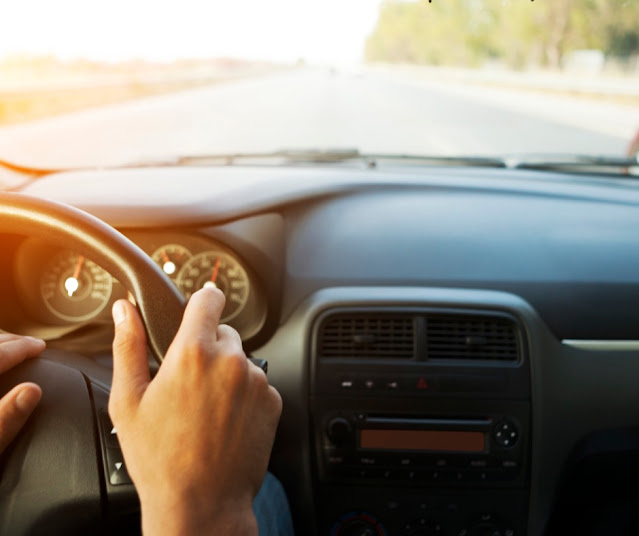How do You Maintain a Ceramic Coated Car?
This article will delve into the key steps and expert tips to help you keep your ceramic-coated car in pristine condition, elevating its aesthetic appeal and safeguarding its surface from environmental hazards.
How to Maintain the Ceramic Coating of Your Car?
Maintaining the ceramic coating of your car requires a combination of regular care and specific techniques to preserve its glossy finish and protective properties. Here are some essential steps to help you maintain your ceramic-coated car:- Gentle Washing: Use a pH-neutral car shampoo and a soft microfiber wash mitt to avoid scratching the coating. Rinse the vehicle thoroughly before washing, and work in small sections, ensuring complete coverage.
- Two-Bucket Method: Employ the two-bucket method to minimize the risk of introducing dirt or debris onto the car's surface. Keep one bucket for the soapy water and another for rinsing the mitt to remove contaminants.
- Avoid Automatic Car Washes: While ceramic coatings provide excellent protection, automated car washes can be harsh on the finish. Hand washing is the preferred method to prevent any potential damage.
- Drying Techniques: After washing, dry the car using a microfiber drying towel or a leaf blower to eliminate water spots. Avoid air drying, especially in direct sunlight, as it can lead to mineral deposits and streaks.
- Use Quality Microfiber Towels: Opt for high-quality microfiber towels when performing maintenance tasks, such as drying, applying quick detailers, or removing dust. These are gentle on the coating and reduce the risk of swirl marks. (Check out this "Guapo Microfiber Car Towel / Microfiber Cloth 1 bundle 28cm x 28cm" in Lazada Philippines.)
- Regular Inspections: Periodically inspect the ceramic coating for any signs of wear or damage. Look for areas where water no longer beads up or where the layer appears dull. Promptly address any issues to maintain the coating's effectiveness.
- Avoid Harsh Chemicals: Avoid abrasive cleaners, harsh solvents, or acidic products that can degrade the ceramic coating. Opt for pH-neutral cleaners and mild detailing solutions that are specifically formulated for use on coated vehicles.
- Apply Ceramic Boosters: Over time, the ceramic coating may require an extra layer of protection to enhance its hydrophobic and self-cleaning properties. Consider using ceramic boosters or spray sealants designed for ceramic-coated cars to revitalize the coating's performance.
- Regular Maintenance Coating: Consult a professional detailing service, like Nanoworx Car Care, to apply a maintenance coating to rejuvenate the ceramic layer if needed. It will help reinforce the protection and maintain the car's appearance.
- Store Indoors if Possible: Parking your ceramic-coated car in a covered garage or carport can shield it from harmful UV rays, bird droppings, and other environmental contaminants that can gradually degrade the coating.
What Destroys Ceramic Coating?
While ceramic coatings provide durable protection for your car's paintwork, several factors can diminish or destroy the ceramic layer over time. Here are some common elements that can negatively impact ceramic coatings:- Abrasive Contact
Scratches or abrasions from rough surfaces, stiff bristle brushes, or improper washing techniques can damage the ceramic coating. It is essential to use gentle washing methods and avoid abrasive materials that can compromise the coating's integrity.- Harsh Chemicals
Certain chemicals and cleaners can be too aggressive for ceramic coatings, causing them to deteriorate. Avoid acidic or alkaline cleaners, solvents, and aggressive degreasers, as they can break down the coating's protective properties.- Improper Maintenance
Neglecting regular cleaning and maintenance can lead to the buildup of contaminants like dirt, bird droppings, and road grime. Over time, these substances can penetrate the coating, potentially causing damage or reducing its effectiveness.- Automated Car Washes
Automated car washes that utilize harsh chemicals, strong brushes, or rough materials can harm ceramic coatings. These aggressive cleaning methods can scratch or strip away the ceramic coating, leaving it vulnerable to damage.- Environmental Factors
Exposure to harsh environmental elements, such as UV rays, acid rain, tree sap, salt, or bird droppings, can degrade a ceramic coating over time. Regularly remove contaminants and consider parking your car in covered areas to minimize their impact.- High Heat
Excessive heat can impact the longevity of ceramic coatings. Prolonged exposure to intense sunlight, particularly in hot climates, can cause the ceramic protection to break down and lose its protective properties. Regularly applying ceramic boosters or sealants can help mitigate heat-related degradation.- Improper Application
If the ceramic coating is not applied correctly, it may not adhere properly or provide the desired level of protection. Following the manufacturer's instructions and, if necessary, seeking professional application can ensure optimal performance.Can I Wax My Car After Ceramic Coating?
Waxing a car coated with a ceramic coating is unnecessary or recommended. Ceramic coatings are designed to provide long-lasting protection and a high-gloss finish, eliminating the need for traditional waxes or sealants. Waxing over a ceramic coating can interfere with its performance and may not adhere correctly.
Ceramic coatings create a semi-permanent bond with the vehicle's paint, forming a protective layer resistant to UV rays, chemicals, and contaminants. The coating enhances shine and hydrophobic properties, making the surface easier to clean and maintain.
Suppose your ceramic-coated car needs extra protection or a boost in its hydrophobic properties. In that case, it is recommended to use specific ceramic coating maintenance products, such as ceramic boosters or spray sealants. These products are formulated to work synergistically with the existing ceramic coating and enhance its performance.
However, it's crucial to follow the instructions provided by the manufacturer of the ceramic coating or the specific maintenance product you intend to use. Each product may have different recommendations or compatibility requirements. Consulting with a professional detailer or contacting the manufacturer can provide the most accurate guidance for your specific ceramic coating.
Remember, the key to maintaining a ceramic-coated car is proper cleaning and maintenance, including regular washing, using appropriate products, and addressing any issues promptly.
How Many Months Does Ceramic Coating Last?
The durability of a ceramic coating can vary depending on several factors, including the quality of the product, the application process, the condition of the vehicle's surface, and how well the coating is maintained. While some ceramic coatings claim to last several years, it's important to note that various conditions can influence real-world longevity.A well-applied and properly maintained ceramic coating can provide protection and hydrophobic properties for approximately 1 to 2 years. However, a general estimate can vary depending on the specific brand, product, and individual circumstances.
Does Sunlight Help Ceramic Coating Cure?
Sunlight can help in the curing process of a ceramic coating. Many ceramic coatings require exposure to ultraviolet (UV) light for proper curing and bonding to the vehicle's surface. UV light activates the chemical properties of the coating, allowing it to form a solid and durable bond with the paint.During the curing process, the ceramic coating undergoes a chemical reaction that cross-links and hardens the coating, creating a protective layer on the paint's surface. UV light helps initiate and accelerate this curing process, forming the coating's desired characteristics, such as hardness, durability, and hydrophobicity.
Exposing the freshly applied ceramic coating to sunlight or artificial UV light sources can help facilitate curing. It is essential to follow the specific instructions provided by the manufacturer of the ceramic coating regarding curing times and exposure to UV light. These guidelines will ensure that the coating cures properly and achieves its intended level of protection and performance.
However, it's worth noting that excessive or prolonged exposure to intense sunlight can also negatively affect the coating. High heat and prolonged UV exposure can cause the coating to degrade over time, reducing its protective properties. Therefore, striking a balance between proper curing and minimizing long-term exposure to intense sunlight is vital for maintaining the longevity and effectiveness of the ceramic coating.
Nanoworx Car Care Offers Coating Maintenance Carwash Service
Nanoworx Car Care Services offers a unique carwash service exclusively designed for ceramic and graphene-coated cars - the first and only in Tarlac City! Watch the Youtube video below to learn more:







